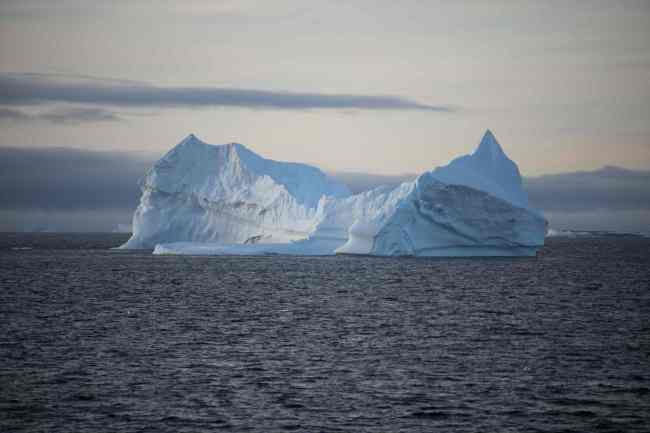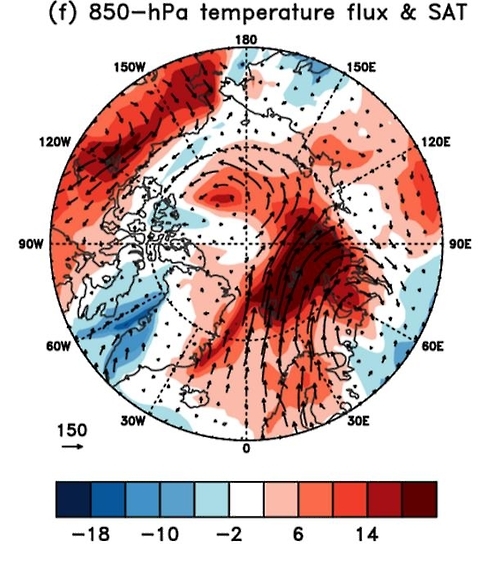Excessive warmth in the Arctic was triggered by the entry of a strong Atlantic windstorm, a team of South Korean researchers has revealed.
According to a study released Thursday by researchers of the Korea Polar Research Institute, the warm and moist air driven to the Arctic by a windstorm named “Frank” is the primary contributing factor of the extremely warm weather in the region.
Storm Frank, the worst winter flooding on record in the United Kingdom, left hundreds homeless for two days in late December 2015.
According to a study released Thursday by researchers of the Korea Polar Research Institute, the warm and moist air driven to the Arctic by a windstorm named “Frank” is the primary contributing factor of the extremely warm weather in the region.
Storm Frank, the worst winter flooding on record in the United Kingdom, left hundreds homeless for two days in late December 2015.

Conventional wisdom has been that sea ice loss and associated upward turbulent heat fluxes were to blame for the warmer Arctic, but the study found that to be a “relatively minor” contributor.
After the windstorm from the end of 2015, the Arctic experienced an extremely anomalous warming event and an increase in air temperature. The increase was a historical record, according to the study, exceeding 6 degrees above freezing. That is about 20 degrees higher than normal.
The excessive warmth continued through mid-January 2016.
At the center of the sudden shift in the large-scale weather regime in the Northern Hemisphere was the strong intrusion of a low pressure system from the Atlantic windstorm traveling at 930 hectopascals, a unit of measure of internal pressure, according to the paper. The intrusion has created moist and warm air masses in the Arctic since then.

The research team earlier monitored the atmospheric responses of the Arctic before and after the windstorm to investigate a link between the intrusion and warmer temperatures.
It found out that a dynamic change to the weather system in the Arctic was observed after the termination of Frank, as it carried warm Gulf Stream waters and strong upper-tropospheric zonal winds along the route, raising the Arctic-wide air temperature.
The sea ice concentrations in the Barents and Kara seas were also “substantially reduced” during the warming event, although it is difficult to assess by how much.
“The earlier studies mostly focused on factors inside the Arctic, such as sea ice loss or increased clouds to explain the excessive warmth in the pole,” Kim Baek-min, the lead on the study, told The Korea Herald. “But our study concludes that an outer factor is at play, affecting the record-breaking temperature rise to 20 to 25 degrees in the Arctic last year.”
It is not yet known whether this event is an archetype of what has been happening recently under the Arctic warming trend, the study added.
The paper was published on Wednesday in Scientific Reports, an international journal from the publishers of the Nature.
By Bak Se-hwan (sh@heraldcorp.com)








![[Graphic News] More Koreans say they plan long-distance trips this year](http://res.heraldm.com/phpwas/restmb_idxmake.php?idx=644&simg=/content/image/2024/04/17/20240417050828_0.gif&u=)
![[KH Explains] Hyundai's full hybrid edge to pay off amid slow transition to pure EVs](http://res.heraldm.com/phpwas/restmb_idxmake.php?idx=644&simg=/content/image/2024/04/18/20240418050645_0.jpg&u=20240419100350)





![[From the Scene] Monks, Buddhists hail return of remains of Buddhas](http://res.heraldm.com/phpwas/restmb_idxmake.php?idx=652&simg=/content/image/2024/04/19/20240419050617_0.jpg&u=20240419175937)

![[KH Explains] Hyundai's full hybrid edge to pay off amid slow transition to pure EVs](http://res.heraldm.com/phpwas/restmb_idxmake.php?idx=652&simg=/content/image/2024/04/18/20240418050645_0.jpg&u=20240419100350)

![[Today’s K-pop] Illit drops debut single remix](http://res.heraldm.com/phpwas/restmb_idxmake.php?idx=642&simg=/content/image/2024/04/19/20240419050612_0.jpg&u=)